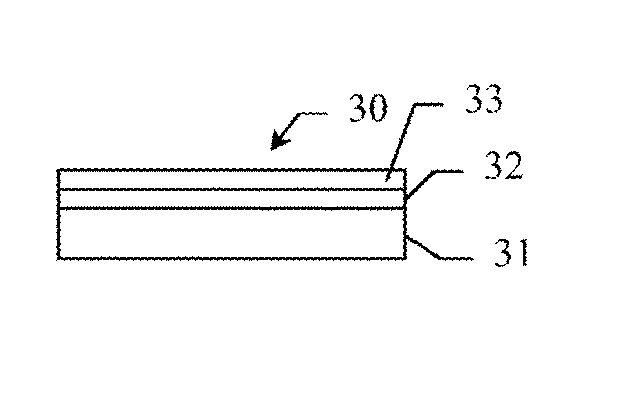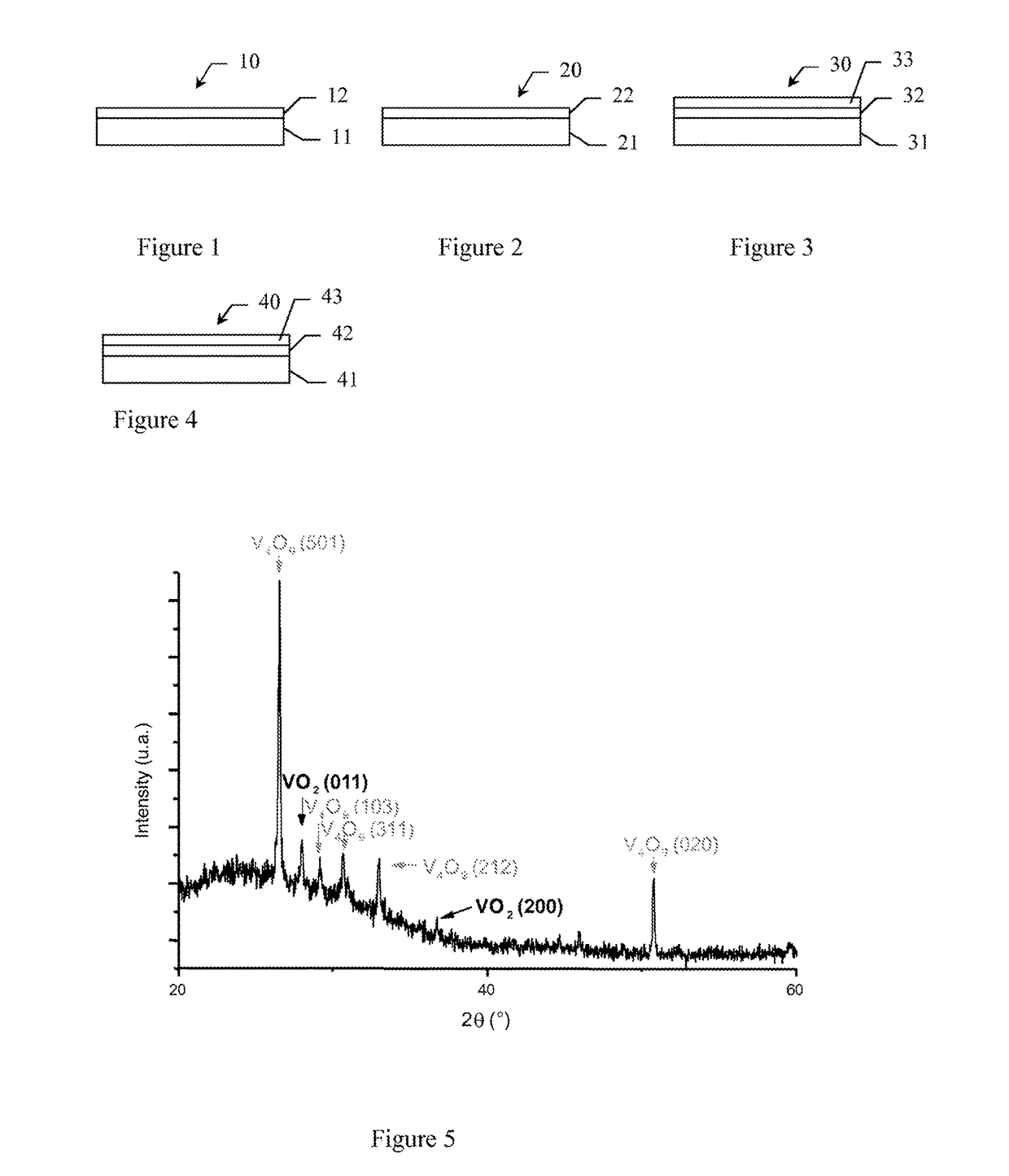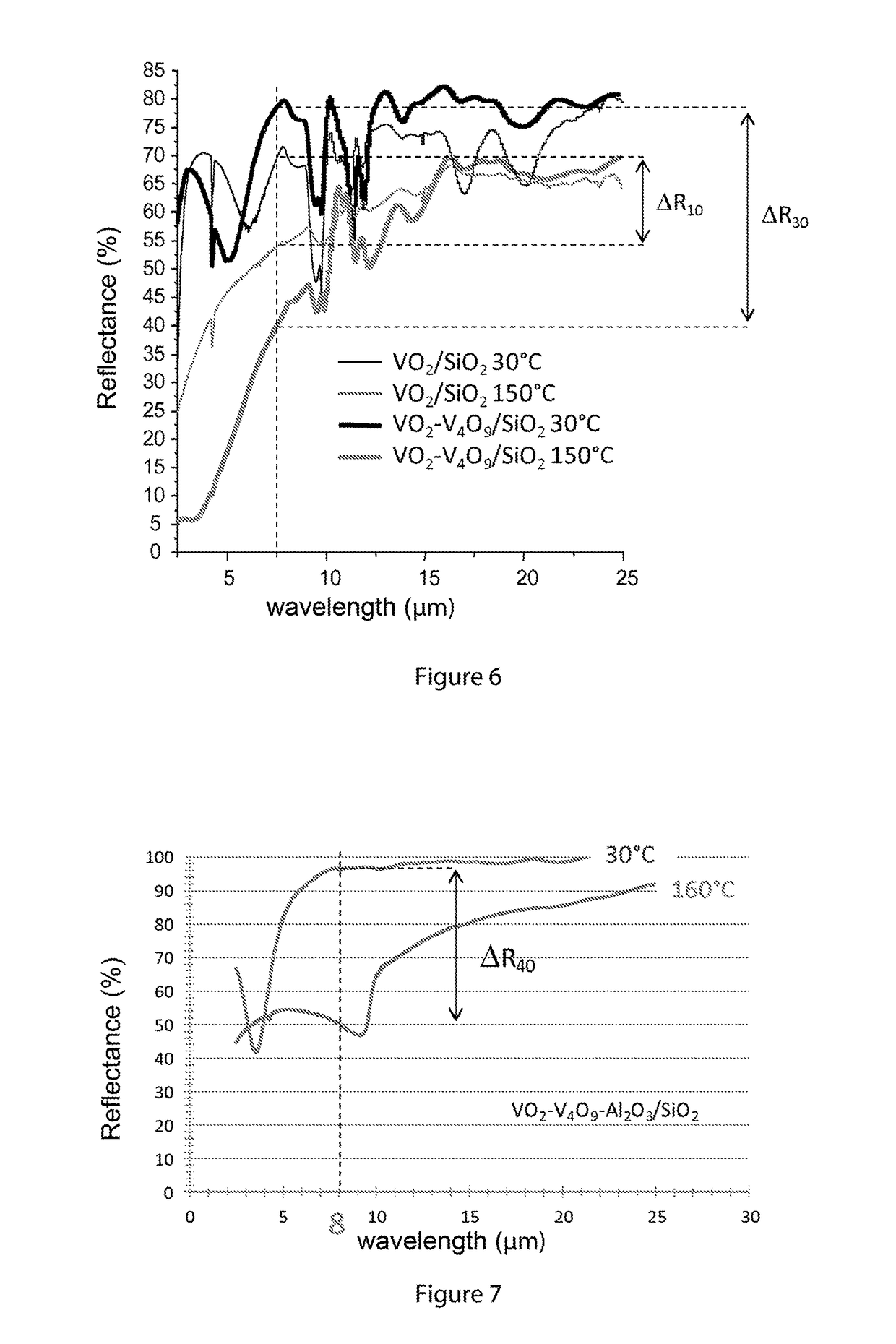Absorbent material and solar panel using such a material
a technology of absorbent materials and solar panels, applied in the direction of superimposed coating processes, instruments, optical elements, etc., can solve the problems of reducing the stagnation temperature of the material, the production of panels with a layer having a variable surface morphology is rather complex on an industrial scale, and the degradation of the heat transfer fluid is urgent,
- Summary
- Abstract
- Description
- Claims
- Application Information
AI Technical Summary
Benefits of technology
Problems solved by technology
Method used
Image
Examples
Embodiment Construction
[0018]The invention provides a novel multilayer material having a low stagnation temperature, and a solar panel comprising such a multilayer material. More specifically, the invention provides a novel multilayer material comprising at least:[0019]a support having a reflectance R higher than 80% for radiations of wavelengths higher than 5 μm,[0020]a selective layer comprising a combination of Vanadium oxides VO2 and VnO2n+ / −1, with n>1, said selective layer having a solar absorbance higher than 75% for radiations of wavelengths comprised between 0.4 and 2.5 μm regardless of the temperature T and having, for radiations having wavelengths comprised between 6 and 10 μm, a transmittance Tr such that:[0021]Tr>85% for T[0022]20%=Tc.
[0023]Tests show that a layer of pure VO2 has an infrared (6-10 μm) transmittance at T>Tc lower than 10% and is thus virtually opaque. For T>Tc, for infrared radiations (6-10 μm), the selective layer according to the invention is characterized by a partial infra...
PUM
| Property | Measurement | Unit |
|---|---|---|
| reflectivity | aaaaa | aaaaa |
| transmittance | aaaaa | aaaaa |
| thickness | aaaaa | aaaaa |
Abstract
Description
Claims
Application Information
 Login to View More
Login to View More - R&D
- Intellectual Property
- Life Sciences
- Materials
- Tech Scout
- Unparalleled Data Quality
- Higher Quality Content
- 60% Fewer Hallucinations
Browse by: Latest US Patents, China's latest patents, Technical Efficacy Thesaurus, Application Domain, Technology Topic, Popular Technical Reports.
© 2025 PatSnap. All rights reserved.Legal|Privacy policy|Modern Slavery Act Transparency Statement|Sitemap|About US| Contact US: help@patsnap.com



